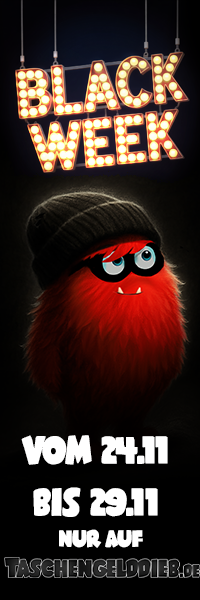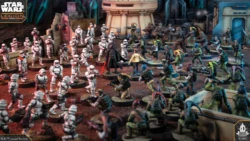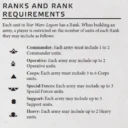Star Wars Legion: Intro zu Neuerungen
Atomic Mass Games präsentieren einen Einführungsartikel zu Star Wars Legion.
Welcome to Legion
“Prepare for Ground Assault!”
-General Rieekan
Our platoon has been hunkered down for weeks, blending in with the dense forests and rocky terrain, waiting for the Empire to make their move. Tonight, it wasn’t waiting anymore. I could feel the tension in the air—the kind of electric charge that always comes before a fight. My heart is pounding, but my fingers are steady as I flip the safety off. We’ve been given one shot at this: a last-ditch strike at an Imperial supply convoy that has been using this remote world as a staging ground for operations. We can’t afford to miss. Not today. Not with the war on the line.
“Now!”
I dart out of cover and the world explodes into motion. My rifle raised, I fire on instinct, the laser blasts cutting through the air. One of the stormtroopers collapses in a heap as my laser fire finds its mark. The rest of the squad opens fire too, our shots ringing out in a staccato of resistance. Caught off guard, the convoy reels from the fury of our assault, flailing out in panicked motions as our ambush unfolds.
For a moment it feels like we have them. The Imperial forces are crumbling under the pressure of our assault, and victory is within reach. But just as the battle seems to be turning in our favor, something changes. The whole squad stops, looking around for the source of our disquiet. Then, a sound—a hum, almost like a distant wind at first, but unmistakable. Out of nowhere, a figure appears among us, as if the ground had torn open and spat him out. I can’t make sense of it at first, but then my heart sinks as a dark realization surfaces. A Sith. Our ambush just took a terrifying turn, and the fight is far from over.Star WarsTM: Legion is a tabletop miniatures game set in the iconic Star Wars galaxy, where anyone can take on the role of a commander leading an army in tactical battles. Players collect, build, and paint highly detailed miniatures representing troopers, vehicles, and heroes, then pit them against other players. Each engagement provides the opportunity for the players to tell a unique story in the Star Wars setting, as they take turns activating units and performing actions on the battlefield. Whether you’re piloting Rebel forces against the might of the Empire, leading the Grand Army of the Republic into battle against the droids of the Separatists, or any combination of epic scenarios, the game offers endless possibilities for strategic play and customization. Read on as we introduce the current Star Wars: Legion factions and the units that comprise their armies!
The Galactic Empire is composed of specialized trooper units and heavy vehicles. Their playstyle revolves around overwhelming the enemy with massed firepower and applying Suppression to panic their enemies and break their will to fight.
The Rebel Alliance is known for their agility and varied force composition. Rebels often rely on guerilla tactics, high-speed maneuvers, and a combination of heroic figures to support squads of underground resistance fighters.
The Grand Army of the Republic wins the day with a cadre of highly trained clone soldiers led by skilled Jedi Commanders. Clone armies have access to powerful battlefield abilities and elite Kamino-bred warriors.
The droid armies of the Separatist Alliance bring massive numbers of battle droids into the fray, making up for their lack of individual strength with sheer volume. They also rely on powerful commanders supported by a large variety of war machines.
So how are these armies divided when building a Star Wars: Legion army? A unit’s Rank tells you how many of that unit can be fielded in a game, what its role may be within the army, and its interactions with command cards and special abilities. There are six ranks in Star Wars: Legion, broken down as follows:
In a standard game of Star Wars: Legion, each player will choose units from these Ranks to create an army. Each army must choose a Commander and three Corps units. From there, it is up to you to choose what units will support your army and how those units are equipped. Let’s dive into how you read the various Star Wars: Legion unit cards to better select your forces.
A Star Wars: Legion unit card is a detailed reference sheet that provides all the essential information for a specific unit, such as its stats, special abilities, and upgrade slots. Here’s a breakdown of ten typical sections and what information you’ll find on a unit card:
- Unit Name and Type – At the top of the card is the name of the unit, such as “Imperial Stormtroopers,” “Luke Skywalker,” or “Super Tactical Droid.” This is sometimes followed by a unit’s subtype, which can help differentiate units with similar names or represent heroes at different stages of their journeys.
- Unit Rank and Size – This section shows what Rank the unit is within a Faction. Additionally, it also illustrates the starting number of miniatures in the unit. For example, a standard “Stormtrooper” unit might have 4 miniatures, while a more specialized unit like “Boba Fett” will be a single miniature.
- Point Cost – Each unit has a cost in points, which is used to balance them in their respective army. This can be found on the top right of the reverse side of a unit card.
- Speed – Indicated by a series of red bars, the unit’s movement speed illustrates how quickly a unit can traverse the battlefield. Units in Star Wars: Legion move a certain distance each time they perform a move action, measured using a corresponding movement tool.
- Weapons – The bottom of a card lists the weapons the unit has access to. This includes the range, type, and number of attack dice, as well as and a weapon’s keywords.
- Defense – This shows the defense characteristics of the unit, represented by a defense die. This determines how well the unit can defend against incoming attacks. Units with a Red defense die usually have higher quality armor than those with White defense dice.
- Surges – Surges are a special modifier applied to dice rolls during combat. This chart indicates if the unit can natively convert a surge result on Attack and/or Defense dice.
- Health – This indicates the health each miniature in a unit has, which represents how much damage it can take before being defeated. Each time a unit suffers damage, it loses one wound. If all the unit’s wounds are lost, it is removed from the game.
- Unit Keywords – This is one of the most important parts of the unit card. The middle section of a unit card indicates what Keywords that unit has. These unique abilities give each unit its own utility and flavor on the battlefield. Keywords are standardized for consistency and are located in the Core Rulebook.
- Upgrades – Units allow you to customize them with upgrade cards. These cards modify the unit’s capabilities, such as adding heavy weapons, giving them extra equipment, or enhancing their defensive abilities. These are represented by images of Comms, Equipment, Personnel, or Grenades on the reverse side of the unit card.
Finally, some Star Wars: Legion units have access to Command Cards. These are a critical part of the game, representing the strategic decisions made by key units on the battlefield. These cards allow players to influence the flow of the game by granting special abilities, altering the order of activations, or enhancing units’ actions during a round. Deciding what Command Card to play at the start of a round can mean the difference between success and failure in your games of Star Wars: Legion.
Until next time, Atomic Mass Transmissions, signing off.
Quelle: AMG Transmissions
Star Wars Legion ist unter anderem bei unserem Partner Fantasywelt erhältlich.

















Die neuen Unit-Cards sind schon übersichtlicher und moderner. V.a. die (nun größeren) Artworks sind echt nice. 🙂
Wie ist denn der Stand des Spiels in den Lokalen Gruppen bei euch so?
Wenn ich nach unseren Spielern gehe ist ja jeden Tag mit der Einstellung zu rechnen.
Aber das stimmt ja offenbar nicht so ganz
Zunehmend wieder aktiv und lebendig nach einem kleinen Nickerchen, weils ja releaseseitig ein bisschen ruhiger war seit ner Weile.
Aber AMG hat ganz sicher nicht vor das Spiel bald einzustellen, sonst hätten sie jetzt nicht gerade Neuauflagen der ganzen Standardtruppen (lies: die die bei den älteren Spielern schon alle genug da sind) in HIPS in Angriff genommen und neue Starterboxen.
Spielerisch wird von weiten Teilen der online sichtbaren Community die „neue Edition“ ebenfalls sehr gut aufgenommen. Bemerkenswert wenig vom üblichen Gepöbel das üblicherweise Veränderungen begleitet. Ein paar moderat skeptische Stimmen zu Beginn, von denen aber viele jetzt nach nem knappen Jahr dabei sind und sich freuen.
Bestehende Kritik ist, dass die momentanen Missionen vielleicht etwas zu gleichförmig sind, aber auch da gibt’s demnächst (TM) Nachschub und die Aussage seitens AMG, dass dieses erste jetzt bewusst „play it safe“ und „baseline“ war, und dass sie mit den kommenden Missionen ein bisschen mehr Pepp reinbringen wollen.
AMG ist sehr aktiv in Kontakt mit der Community, regelmäßig geben die „Wills“ Interviews bei denen sie ziemlich authentisch und frei von der Leber weg Auskunft geben.
Wenn Du mich fragst: Legion war für ne Weile in Behandlung, das hat ein wenig gepiekt, und jetzt stehts quietschfidel und gesund wieder auf’m Sportplatz und wärmt sich auf.
Dem würde ich zustimmen und ist überhaupt keinerlei Marketing vorhanden und es geht einfach unter Darfst du gerne jeden FLGS fragen.
Legion wurde ganz hart durch 3D Druck getroffen und die Preise der neuen Figuren werden kaum akzeptiert. Auch gerne die Community nach befragen.
Es werden die neuen Startboxen aber ganz gut verkauft momentan, laut Grosshändlern, und das lässt hoffen. Die Turnierkits sind leider immer noch nicht raus.
AMG hat weiter Probleme das System konstant über das Jahr zu begleiten. Die Überarbeitung mit dem letzten Major Update war sicher ein Erfolg, aber die roadmap ist voll mit repacks (und Preisanpassungen) und nur punktuell interessanten Neuheiten. Das ist auf der einen Seite entspannter als zum Beispiel bei GW, dafür nähern sich die Preise sehr stark dem Primus.
Es gibt aber aktive communities und sowohl regional als auch über ganz Deutschland verteilt gibt es viele Events und Turniere.
Man darf gespannt sein wie gut Legion mit den neuen Startern performt und ob AMG die Glut mal am laufen hält. Der 3D-Druck ist definitiv ein großes Thema. Die Preise sind da aber eben auch ein großes Problem. Der Einstieg in die Fraktionen ist günstig, aber am Ende gibt man auch locker 500 Schleifen aus für seine Armee. Und dafür bietet AMG zu wenig über das Jahr betrachtet und das game wird medial kaum aktiv begleitet.